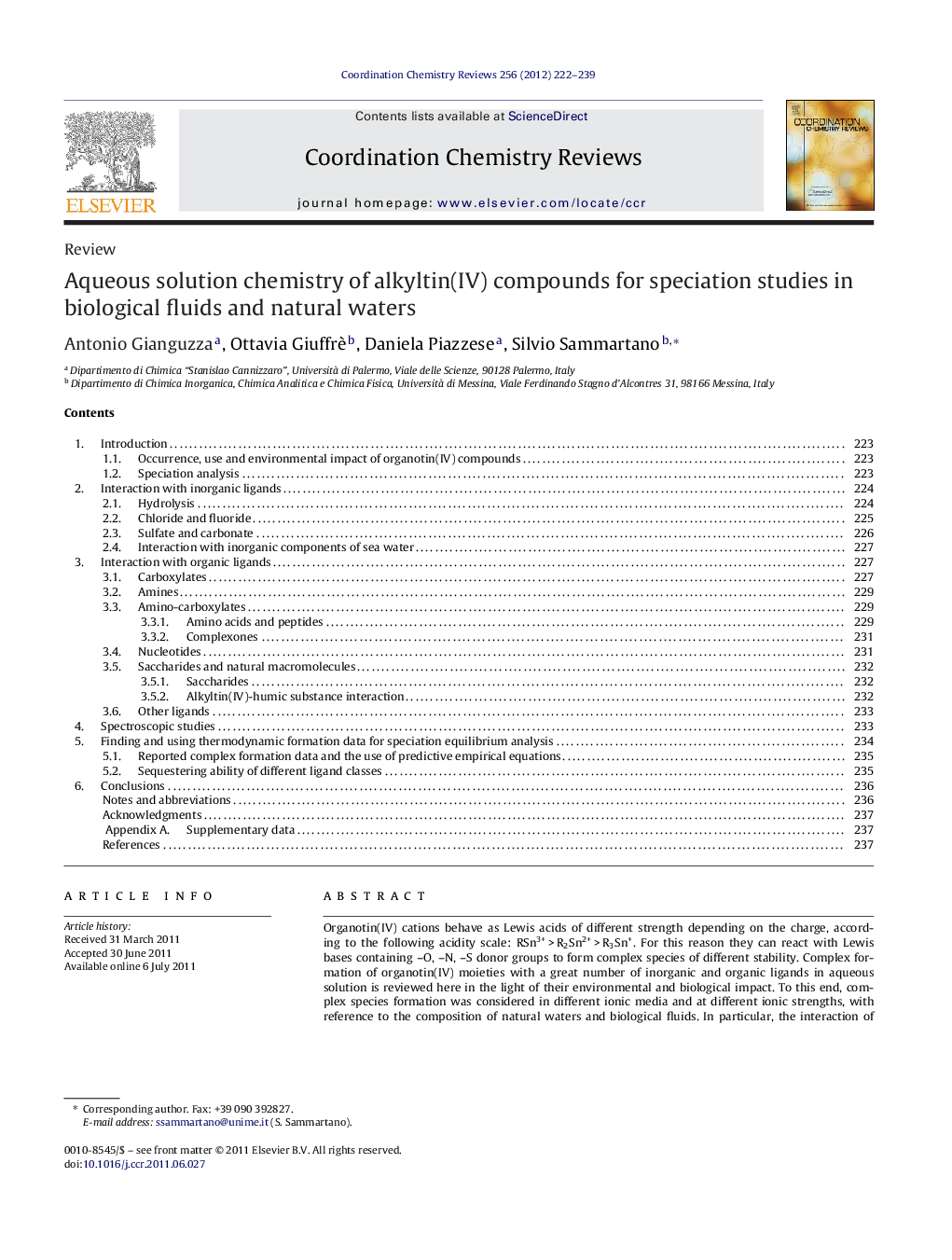| Article ID | Journal | Published Year | Pages | File Type |
|---|---|---|---|---|
| 1299142 | Coordination Chemistry Reviews | 2012 | 18 Pages |
Organotin(IV) cations behave as Lewis acids of different strength depending on the charge, according to the following acidity scale: RSn3+ > R2Sn2+ > R3Sn+. For this reason they can react with Lewis bases containing –O, –N, –S donor groups to form complex species of different stability. Complex formation of organotin(IV) moieties with a great number of inorganic and organic ligands in aqueous solution is reviewed here in the light of their environmental and biological impact. To this end, complex species formation was considered in different ionic media and at different ionic strengths, with reference to the composition of natural waters and biological fluids. In particular, the interaction of alkyltin(IV) compounds with the following ligands was taken into account: hydroxo, chloride, sulfate, fluoride, carbonate and phosphate; carboxylates, amines, amino-carboxylates, nucleotides, saccharides, S-containing ligands and antibiotics. Moreover, the interaction of organotin(IV) cations with synthetic (polyacrylate) and natural occurring (fulvic and alginic acids) polyelectrolytes was also considered. The strength of interaction is reported in terms of stability constants of complex species formed and of other thermodynamic parameters, such as formation enthalpy. The stability trend of the complexes is alkyltin(IV)-S > alkyltin(IV)-N > alkyltin(IV)-O-donor ligands. On the basis of data in the literature, empirical relationships are provided to predict the stability of alkyltin(IV) species with some classes of ligands. The complexation models proposed by the different authors for the species formation of mono-, di- and tri-alkyltin(IV) in the presence of various ligands were considered in the light of defining the speciation picture of this class of compounds in aquatic systems.
Graphical abstractFigure optionsDownload full-size imageDownload high-quality image (153 K)Download as PowerPoint slideHighlights► Trends of stability for alkyltin(IV) complexes with ligands of the same class are assessed. ► Stability of alkyltin(IV) complexes with different classes of ligands is compared. ► Ligand–ligand competition in multi-component aqueous solutions is pointed out. ► Some empirical relationships are reported for the stability as a function of binding groups. ► The sequestering capacity of the different ligands towards alkyltin(IV) compounds is defined.
